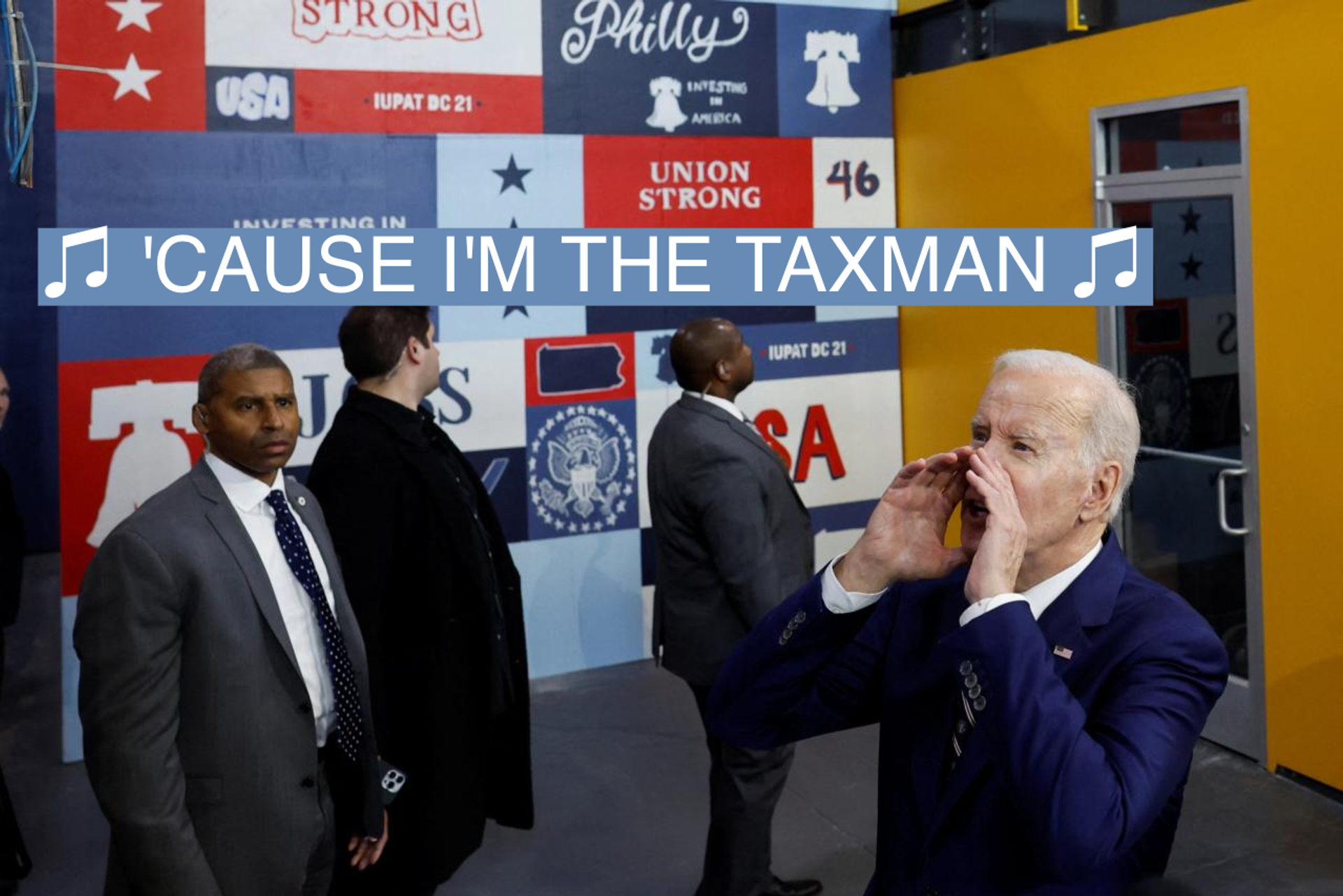The News
President Biden hit the road on Thursday to sell his new budget, pitching Americans on a big expansion of the safety net paid for by an even bigger increase in taxes.
“My budget is going to give working people a fighting chance, it’s going to create good-paying jobs, and we can pay for these jobs while reducing the deficit,” Biden said in a speech in Philadelphia outlining his economic agenda.
In this article:
Joseph’s view
The headline the White House clearly wanted — and often got — is that his proposals would trim deficits by $3 trillion over ten years, thanks to about $4.5 trillion in new taxes and savings.
The tax and spending proposals are highly reminiscent of the “Build Back Better” framework he set out to achieve in his first year in office. But while Biden pitched that plan as a historic FDR-style expansion of the safety net that would be “fully paid for,” he’s now repurposed its revenue raisers as a plan to dramatically reduce the deficit.
“I think everyone is acknowledging that we are in a moment in time where conversations related to budget deficits and the debt limit are important,” Zach Moller, director of economic policy at the centrist Third Way think tank, told Semafor.
Sen. Tim Kaine, D-Va. saw the budget as a natural evolution of the Inflation Reduction Act, which won over moderate Sen. Joe Manchin, D-W. Va. by pairing health and energy spending with about $238 billion in deficit reduction.
“I think that’s IRA — learning ‘Hey, this is a good thing; if we can do both, let’s try,’” Kaine told Semafor.
As former Paul Ryan aide George Callas noted on Twitter, though, Biden’s budget “relies heavily on proposals already rejected by his own party’s congressional wing.” Many of its tax ideas were pared back or vetoed by House and Senate Democrats even before Manchin killed “Build Back Better.”
Now unchained by the need to scrounge for votes in Congress, however, Biden is signaling he wants to come back for the rest of his economic agenda ahead of a 2024 campaign run. His tax proposals include — among other items — stepping up the corporate tax rate to 28% from 21%; raising the top capital gains tax rate to 39.6% for million-dollar earners; a broad 25% minimum tax targeted at billionaires; and higher taxes on stock buybacks. On the other side of the ledger, he would reinstate the expired child tax credits from his pandemic relief package.
They serve a clear political purpose in the fight over the debt ceiling as well, allowing him to contrast his deficit reduction plans — raising taxes on rich people like crazy — with Republican calls for shrunken budgets and more tax cuts. On Thursday, he again challenged the GOP to name a budget plan of their own, betting that cuts to programs like Medicaid or the Affordable Care Act would prove less popular than expanding child care subsidies and asking someone like Elon Musk to pay more taxes on Tesla stock.
“No billionaire should be paying a lower tax than somebody working as a school teacher or a firefighter or any of you in this room,” Biden said in Philadelphia on Thursday.
The View From Republicans
Speaker Kevin McCarthy dismissed Biden’s spending plans as a “completely unserious” progressive wishlist in a statement and zeroed in on its tax-centric approach to deficit reduction. “Mr. President: Washington has a spending problem, NOT a revenue problem,” he said.
Larry Kudlow, who served as Trump’s National Economic Council director, wrote in Fox Business that the budget was an example of “radical left Democrats want to punish success” in contrast to his former boss, “who believed in rewarding success by reducing marginal tax rates across the board.”
Notable
- At the New York Times, Peter Baker sees the White House’s pivot to deficit talk as part of a broader effort to speak “more to the concerns of the political middle, seeking to recapture the more centrist identity that long defined him.” Baker lumps the budget in with Biden’s recent shifts toward a tougher “law and order” policy on crime and immigration, which also seem aimed at reassuring voters outside his progressive base.
